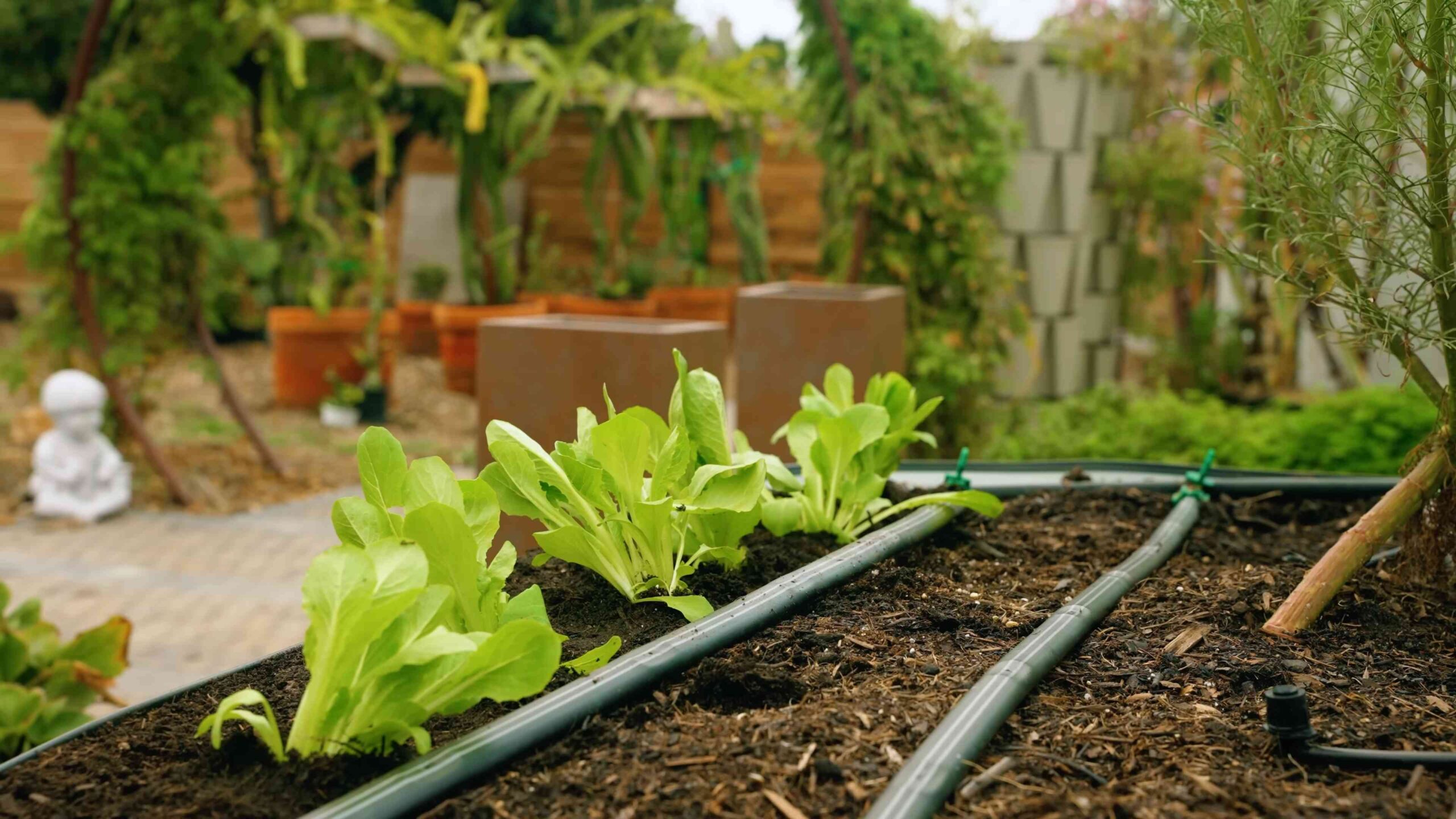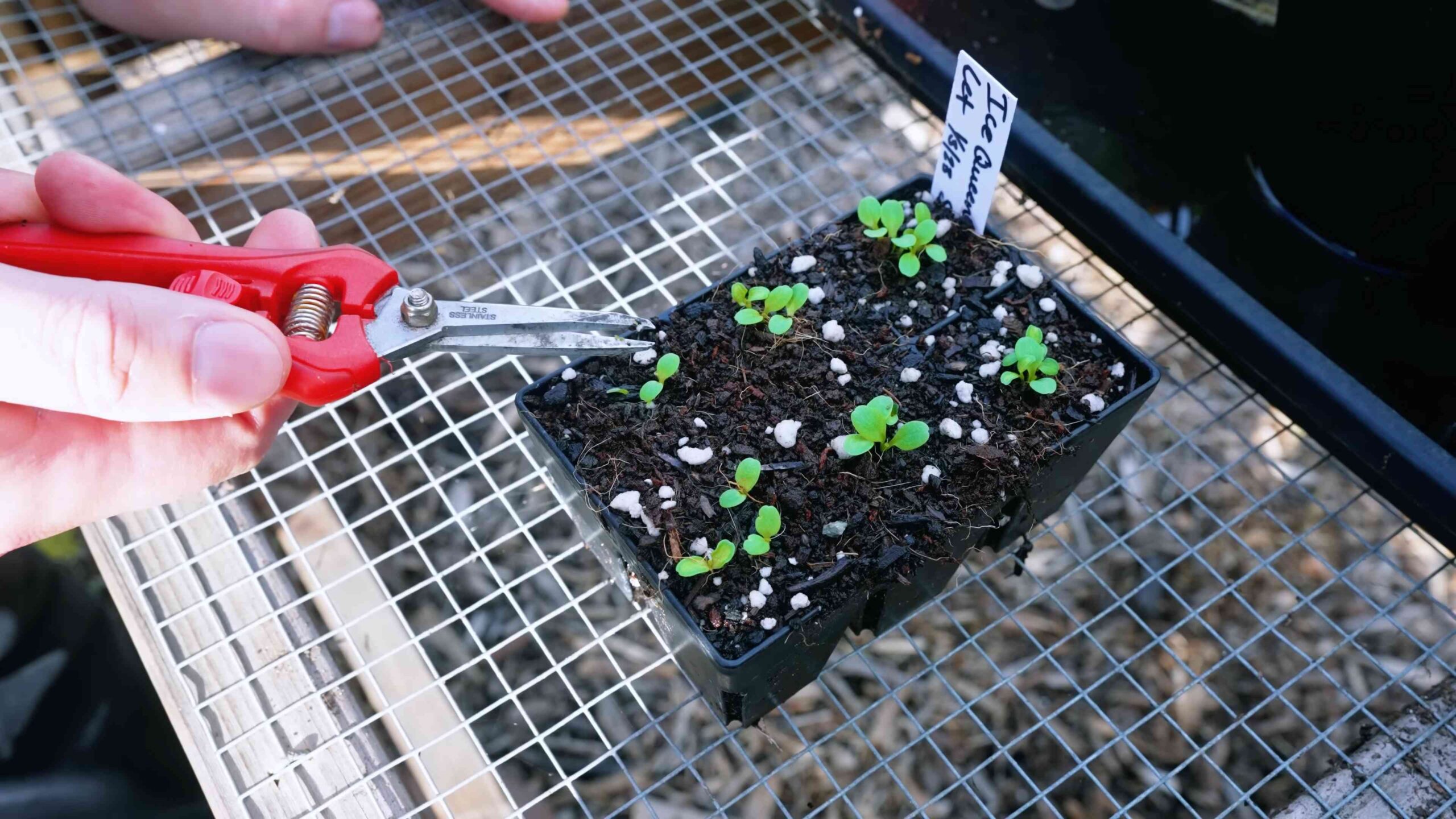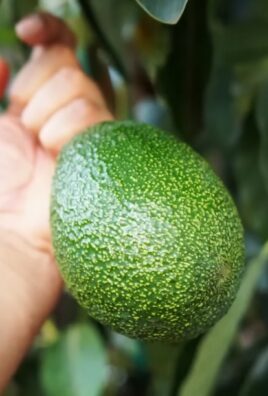Lettuce growing easy hack, that’s what we’re diving into today! Imagine stepping into your backyard and plucking fresh, crisp lettuce leaves for your salad, sandwich, or even a refreshing wrap. Sounds idyllic, right? Well, it’s more achievable than you think, even if you don’t have a sprawling garden or a green thumb that’s always worked. For centuries, cultivating your own food, including leafy greens like lettuce, has been a cornerstone of self-sufficiency and healthy living. From ancient Roman gardens to medieval monastery plots, growing your own lettuce has been a way to connect with nature and nourish your body.
But let’s be honest, sometimes growing lettuce can feel like a battle against bolting, pests, and unpredictable weather. That’s where this DIY article comes in! I’m going to share a simple, yet incredibly effective, lettuce growing easy hack that will transform your gardening experience. This trick will help you extend your harvest, minimize common problems, and enjoy a continuous supply of delicious, homegrown lettuce. So, if you’re tired of buying wilted lettuce from the store or struggling to keep your lettuce plants alive, keep reading! This is the game-changer you’ve been waiting for.

Grow Lettuce Like a Pro: My Super Simple DIY Hack!
Hey there, fellow gardening enthusiasts! I’m so excited to share my absolute favorite DIY hack for growing lettuce. Forget complicated setups and finicky seedlings – this method is ridiculously easy, budget-friendly, and yields a surprisingly abundant harvest. I’ve been using this technique for years, and I’m constantly amazed at how well it works. Get ready to enjoy fresh, crisp lettuce straight from your “garden” (more on that later!) with minimal effort.
What You’ll Need: The Essentials
Before we dive in, let’s gather our supplies. The beauty of this hack is that you probably already have most of these items lying around!
* **Lettuce Core/Stem:** This is the star of the show! After you’ve enjoyed a head of lettuce (Romaine, Butterhead, or even Iceberg – though I’ve had the best luck with Romaine and Butterhead), don’t toss the core! We’re going to give it a new lease on life.
* **Shallow Dish or Bowl:** A small bowl, a plastic container lid, or even a saucer will work perfectly. It just needs to be able to hold a little bit of water.
* **Water:** Tap water is fine!
* **Sunny Spot:** A windowsill, a patio table, or any area that gets plenty of sunlight is ideal.
* **Potting Soil (Optional):** While not strictly necessary, potting soil will give your lettuce a nutrient boost and help it grow even stronger.
* **Small Pot (Optional):** If you choose to use potting soil, you’ll need a small pot to transplant your lettuce into.
* **Spray Bottle (Optional):** For misting the lettuce leaves to keep them hydrated.
Step-by-Step Instructions: Bringing Your Lettuce Back to Life
Okay, let’s get our hands dirty (well, maybe just a little!). Here’s the breakdown of how to revive your lettuce core and turn it into a mini-lettuce factory.
1. **Prepare the Lettuce Core:** After you’ve eaten most of your head of lettuce, you’ll be left with the core or stem. Make sure to remove any wilted or brown outer leaves. You want to be left with a firm, relatively clean core. Don’t worry if there are a few small leaves still attached – they might even start to grow!
2. **Place the Core in Water:** Fill your shallow dish or bowl with about an inch of water. Place the lettuce core, cut-side down, into the water. Make sure the bottom of the core is submerged, but the top part is exposed to air.
3. **Find a Sunny Spot:** Place the dish with the lettuce core in a sunny location. A windowsill that gets several hours of direct sunlight is perfect. If you don’t have a sunny windowsill, a bright spot on a patio or balcony will also work.
4. **Change the Water Regularly:** This is crucial! Change the water every day or two to prevent bacteria growth and keep the water fresh. This will help your lettuce core thrive.
5. **Observe and Wait:** Now comes the fun part – watching your lettuce come back to life! Within a few days, you should start to see small roots emerging from the bottom of the core and tiny new leaves sprouting from the top. This is a sign that your lettuce is happy and healthy!
6. **(Optional) Transplant to Soil:** Once the roots are about an inch or two long and you have a good amount of new leaf growth, you can transplant your lettuce core into a small pot filled with potting soil. This will provide the lettuce with additional nutrients and help it grow even bigger.
* If you choose to transplant, gently remove the lettuce core from the water.
* Dig a small hole in the potting soil, large enough to accommodate the roots.
* Carefully place the lettuce core into the hole and cover the roots with soil.
* Water the soil gently.
7. **Continue to Water and Provide Sunlight:** Whether you keep your lettuce in water or transplant it to soil, continue to provide it with plenty of sunlight and water. If it’s in water, keep changing the water regularly. If it’s in soil, water it when the soil feels dry to the touch.
8. **(Optional) Mist the Leaves:** To keep the leaves hydrated, especially if you live in a dry climate, you can mist them with water using a spray bottle.
9. **Harvest Your Lettuce:** Once the new leaves have grown to a size that you like, you can start harvesting them! Simply snip off the outer leaves with scissors, leaving the inner leaves to continue growing. This will allow you to harvest lettuce from the same core for several weeks!
Troubleshooting: Common Issues and Solutions
Even with this super simple hack, you might encounter a few minor issues. Here’s how to troubleshoot them:
* **Core Rotting:** If the lettuce core starts to rot, it’s usually due to bacteria growth in the water. Make sure you’re changing the water regularly (every day or two). You can also try adding a drop or two of hydrogen peroxide to the water to help kill bacteria. If the rot is severe, it’s best to start with a fresh lettuce core.
* **Slow Growth:** If your lettuce isn’t growing as quickly as you’d like, make sure it’s getting enough sunlight. Lettuce needs at least 6 hours of sunlight per day to thrive. You can also try adding a small amount of liquid fertilizer to the water or soil to give it a nutrient boost.
* **Yellowing Leaves:** Yellowing leaves can be a sign of overwatering or underwatering. If the leaves are yellow and soggy, you’re probably overwatering. If the leaves are yellow and dry, you’re probably underwatering. Adjust your watering accordingly.
* **Pests:** While it’s unlikely that you’ll encounter pests with this indoor growing method, it’s still possible. If you see any pests, such as aphids or whiteflies, you can try spraying the leaves with a mixture of water and dish soap.
Tips and Tricks for Lettuce Growing Success
Here are a few extra tips and tricks I’ve learned over the years to help you maximize your lettuce harvest:
* Experiment with Different Lettuce Varieties: I’ve found that Romaine and Butterhead lettuce tend to work best with this method, but feel free to experiment with other varieties to see what works best for you.
* Rotate Your Lettuce Cores: To ensure a continuous supply of lettuce, start new lettuce cores every week or two. This way, you’ll always have fresh lettuce ready to harvest.
* Use Filtered Water: While tap water is generally fine, using filtered water can help to prevent mineral buildup and keep your lettuce healthier.
* Provide Good Air Circulation: Good air circulation will help to prevent fungal diseases. Make sure your lettuce is not overcrowded and that there is plenty of air flowing around it.
* Don’t Overcrowd: If you’re growing multiple lettuce cores in the same dish or pot, make sure they have enough space to grow. Overcrowding can lead to stunted growth and disease.
* Consider Grow Lights: If you don’t have a sunny spot, you can use grow lights to provide your lettuce with the light it needs.
* Harvest Regularly: Harvesting your lettuce regularly will encourage it to produce more leaves.
* Enjoy Your Harvest! The best part of this DIY hack is enjoying the fruits (or rather, vegetables!) of your labor. Use your fresh lettuce in salads, sandwiches, wraps, or any other dish you like.
Why I Love This Hack: The Benefits
I’m seriously obsessed with this lettuce-growing hack, and here’s why:
* It’s Sustainable: You’re essentially recycling your lettuce scraps and reducing food waste.
* It’s Budget-Friendly: You don’t need to buy expensive seeds or equipment.
* It’s Easy: Even if you have a black thumb, you can successfully grow lettuce with this method.
* It’s Rewarding: There’s nothing quite like the satisfaction of harvesting your own fresh lettuce.
* It’s Educational: It’s a great way to learn about plant growth and propagation.
So, what are you waiting for? Grab that lettuce core and get growing! I promise you’ll be amazed at how easy and rewarding this DIY hack is. Happy gardening!

Conclusion
So, there you have it! This simple, yet incredibly effective, DIY trick for growing lettuce is a game-changer for anyone looking to enjoy fresh, crisp lettuce right from their own backyard (or even balcony!). We’ve shown you how easy it is to transform discarded plastic containers into thriving lettuce gardens, saving you money, reducing waste, and providing you with a constant supply of delicious greens.
Why is this a must-try? Because it’s accessible to everyone, regardless of gardening experience or space limitations. Whether you’re a seasoned gardener or a complete beginner, this method is straightforward and forgiving. Plus, the satisfaction of harvesting your own lettuce, knowing you nurtured it from seed to salad, is truly rewarding. Imagine the vibrant colors and fresh flavors adding a burst of health to your meals, all thanks to your own efforts.
But the beauty of this DIY project lies in its adaptability. Feel free to experiment with different types of lettuce. Romaine, butterhead, loose-leaf – they all thrive using this method. You can even try mixing different varieties in the same container for a colorful and flavorful salad blend. Consider adding companion plants like marigolds to deter pests naturally. Don’t be afraid to get creative and personalize your lettuce garden!
Beyond lettuce, this technique can be adapted for other leafy greens like spinach, kale, and arugula. The principles remain the same: good drainage, nutrient-rich soil, and plenty of sunlight. Think of this as a starting point for your own container gardening adventures.
We also encourage you to think about the environmental impact. By repurposing plastic containers, you’re actively reducing waste and contributing to a more sustainable lifestyle. It’s a small act with a big impact, and it’s something you can feel good about.
Now, it’s your turn! We wholeheartedly encourage you to try this easy lettuce growing hack. Gather your supplies, follow the steps outlined, and watch your lettuce flourish. We’re confident that you’ll be amazed by the results.
And most importantly, we want to hear about your experience! Share your photos, tips, and variations in the comments below. Let’s create a community of lettuce-loving gardeners who are passionate about growing their own food sustainably. What kind of containers did you use? What varieties of lettuce did you plant? Did you encounter any challenges, and how did you overcome them? Your insights will be invaluable to other readers who are just starting out.
So, go ahead, get your hands dirty, and experience the joy of growing your own lettuce. You won’t regret it! Happy gardening!
Frequently Asked Questions (FAQs)
What kind of containers are best for growing lettuce using this DIY method?
The ideal containers are plastic tubs, buckets, or even large yogurt containers. The most important factor is drainage. Ensure the container has drainage holes at the bottom to prevent waterlogging, which can lead to root rot. Dark-colored containers can heat up quickly in direct sunlight, so lighter colors are generally preferred, especially in warmer climates. If you’re using a dark container, consider placing it in a shaded area during the hottest part of the day. Also, make sure the container is food-grade plastic to avoid any harmful chemicals leaching into your lettuce.
What type of soil should I use for growing lettuce in containers?
Lettuce thrives in well-draining, nutrient-rich soil. A good quality potting mix specifically formulated for vegetables is ideal. Avoid using garden soil, as it can be too heavy and compact in containers, hindering drainage and root growth. You can also amend your potting mix with compost or other organic matter to boost its nutrient content and improve drainage. A slightly acidic to neutral pH (around 6.0 to 7.0) is optimal for lettuce growth.
How much sunlight does lettuce need when grown in containers?
Lettuce needs at least 6 hours of sunlight per day to thrive. However, in hotter climates, providing some afternoon shade can prevent the leaves from wilting or becoming bitter. A location that receives morning sun and afternoon shade is often ideal. If you don’t have a sunny spot, you can supplement with grow lights. Position the grow lights a few inches above the lettuce plants and provide 12-14 hours of light per day.
How often should I water my container lettuce?
Lettuce needs consistent moisture to grow well, but avoid overwatering, which can lead to root rot. Water when the top inch of soil feels dry to the touch. Water deeply, ensuring the water drains out of the drainage holes. The frequency of watering will depend on the weather conditions, the size of the container, and the type of soil you’re using. During hot, dry weather, you may need to water daily. Check the soil moisture regularly and adjust your watering schedule accordingly.
How do I fertilize my container lettuce?
Lettuce is a relatively light feeder, but it still benefits from regular fertilization. Use a balanced liquid fertilizer diluted to half strength every 2-3 weeks. Alternatively, you can use a slow-release fertilizer at planting time. Avoid over-fertilizing, as this can lead to leggy growth and bitter-tasting leaves. Organic fertilizers, such as compost tea or fish emulsion, are also excellent options.
What are some common pests and diseases that affect lettuce, and how can I prevent them?
Common pests that affect lettuce include aphids, slugs, snails, and cutworms. To prevent pest problems, inspect your plants regularly and remove any pests you find by hand. You can also use insecticidal soap or neem oil to control aphids and other soft-bodied insects. Slugs and snails can be controlled with beer traps or by handpicking them at night. Cutworms can be prevented by using cutworm collars around the base of the plants.
Common diseases that affect lettuce include downy mildew, powdery mildew, and bottom rot. To prevent disease problems, provide good air circulation around your plants, avoid overwatering, and water in the morning so the leaves have time to dry before nightfall. If you notice any signs of disease, remove the affected leaves immediately.
When is the best time to harvest my container lettuce?
You can start harvesting lettuce leaves as soon as they are large enough to eat, typically when they are about 4-6 inches long. Harvest outer leaves first, leaving the inner leaves to continue growing. This is known as “cut-and-come-again” harvesting. You can also harvest the entire head of lettuce at once. To do this, cut the lettuce at the base of the plant. Harvest lettuce in the morning, when the leaves are crisp and cool.
Can I grow lettuce indoors using this DIY method?
Yes, you can grow lettuce indoors using this DIY method, but you’ll need to provide adequate light. Place your lettuce containers near a sunny window that receives at least 6 hours of sunlight per day. If you don’t have enough natural light, you can supplement with grow lights. Use full-spectrum grow lights and position them a few inches above the lettuce plants. Provide 12-14 hours of light per day.
What are some variations of this DIY lettuce growing method?
One variation is to use self-watering containers. These containers have a reservoir at the bottom that holds water, which is then drawn up into the soil as needed. This can help to prevent overwatering and underwatering. Another variation is to use vertical planters. These planters are designed to be hung on walls or fences, making them ideal for small spaces. You can also try growing lettuce in hanging baskets.
How can I make my lettuce taste less bitter?
Lettuce can sometimes taste bitter, especially in hot weather. To reduce bitterness, provide some afternoon shade to your lettuce plants. Also, avoid overwatering and over-fertilizing. Harvesting lettuce in the morning, when the leaves are cool, can also help to reduce bitterness. Some varieties of lettuce are naturally less bitter than others.
Can I grow lettuce from seed using this DIY method?
Yes, you can absolutely grow lettuce from seed using this DIY method. Start by sowing the seeds directly into your prepared containers. Sow the seeds thinly and cover them with a thin layer of soil. Keep the soil moist until the seeds germinate, which usually takes about 7-14 days. Once the seedlings emerge, thin them out so that they are spaced about 4-6 inches apart.
How do I prevent my lettuce from bolting (going to seed)?
Bolting is when lettuce plants prematurely flower and produce seeds, which can make the leaves taste bitter. Bolting is often triggered by hot weather or stress. To prevent bolting, provide some afternoon shade to your lettuce plants, water them regularly, and harvest the leaves frequently. Choose bolt-resistant varieties of lettuce.





Leave a Comment